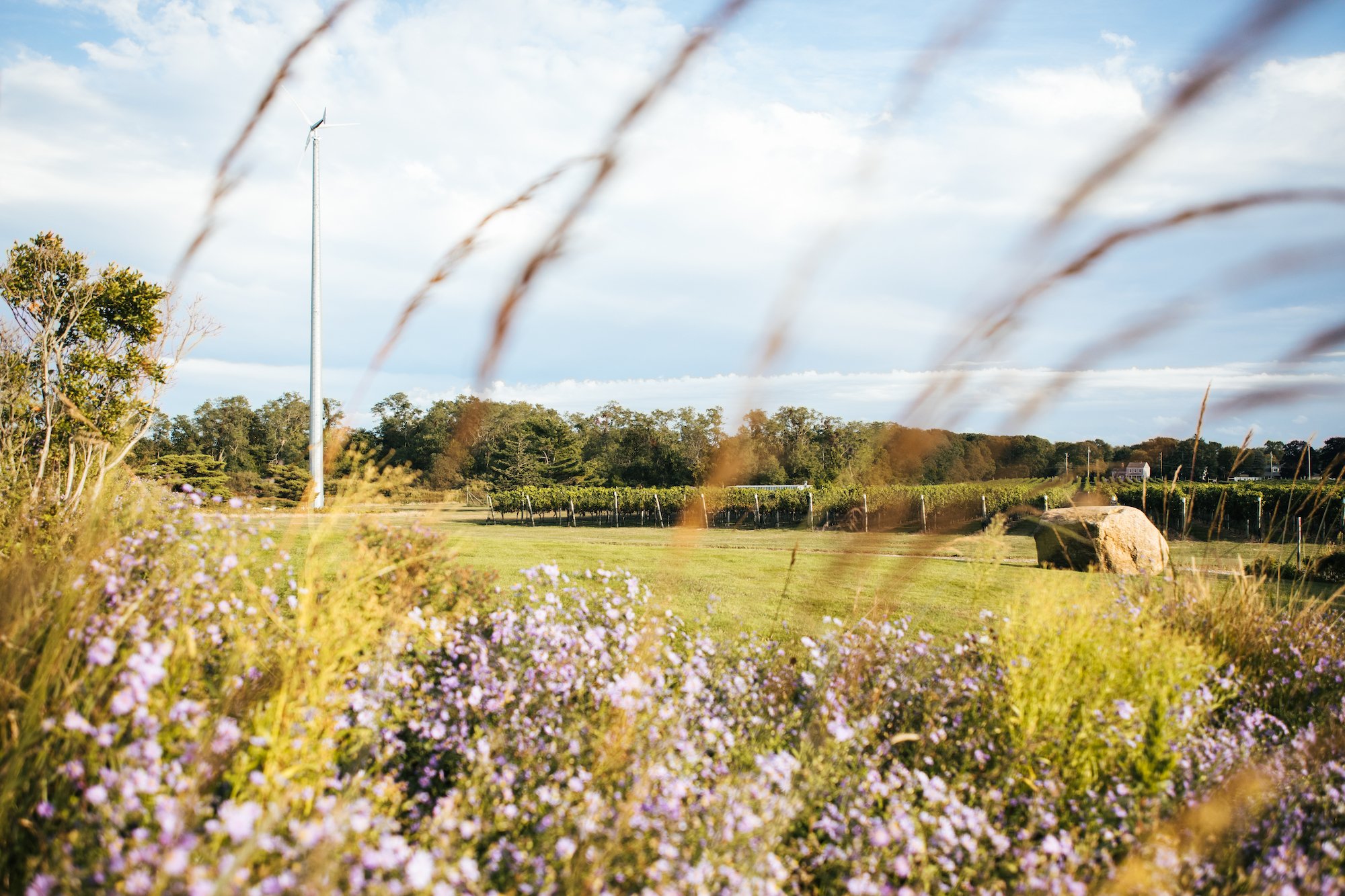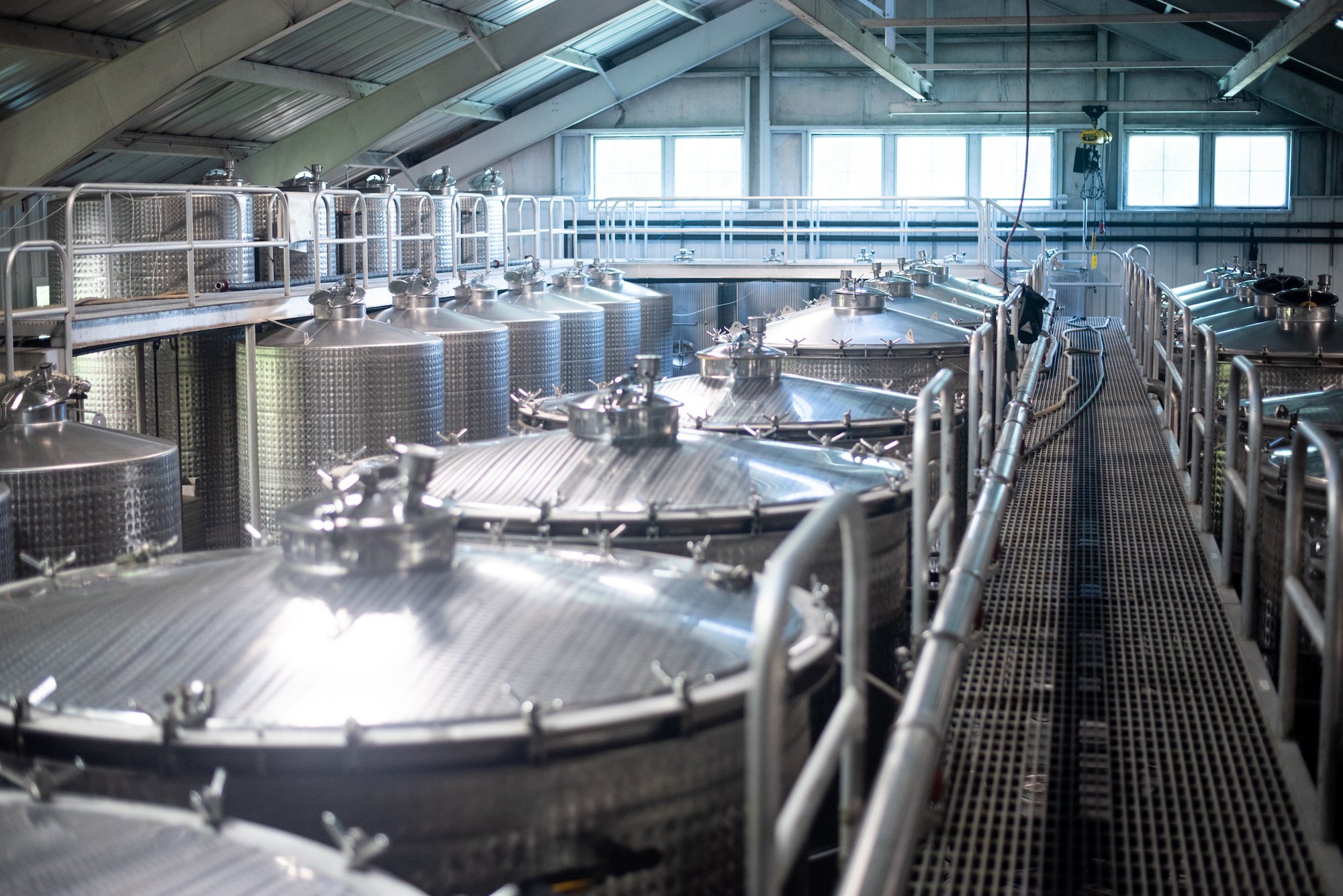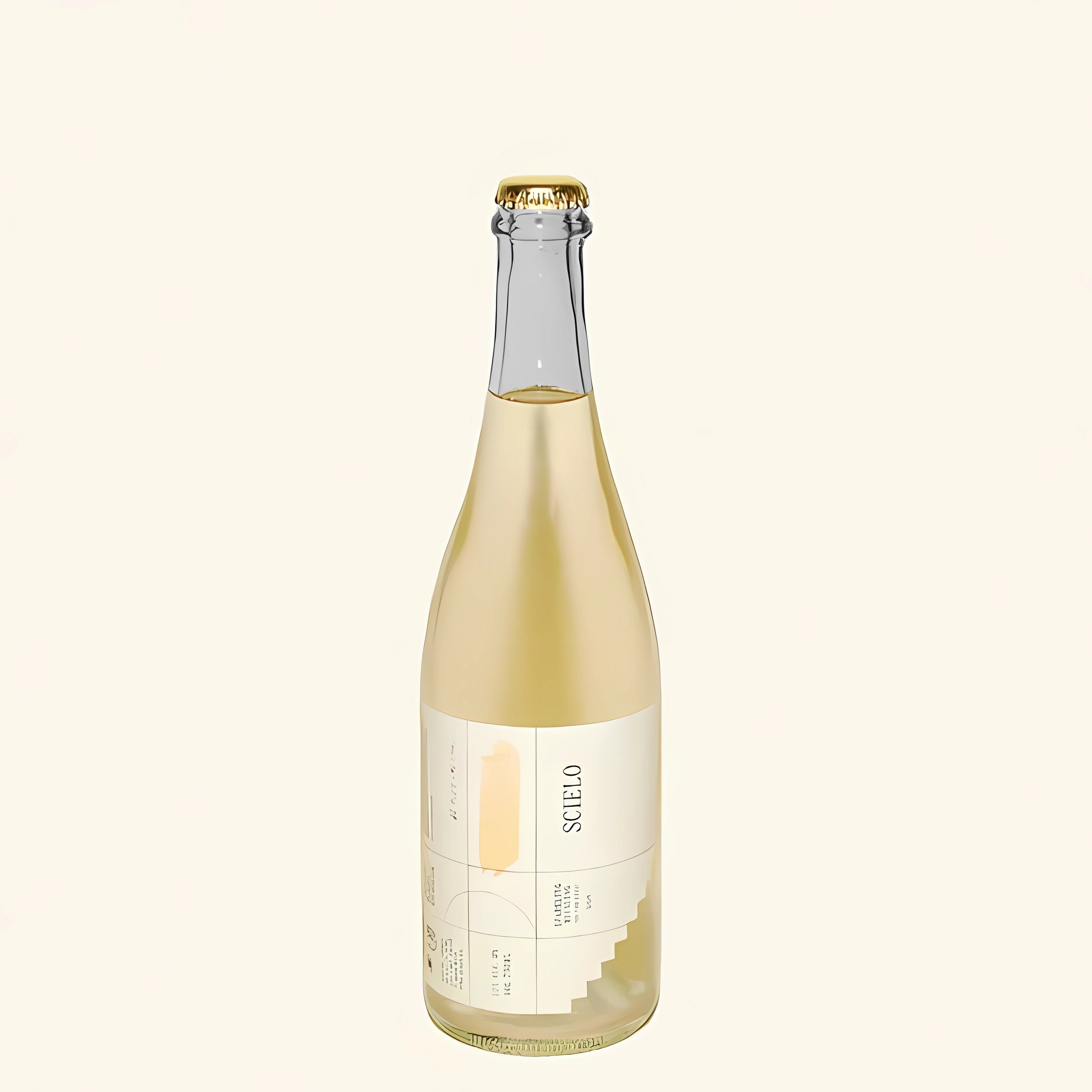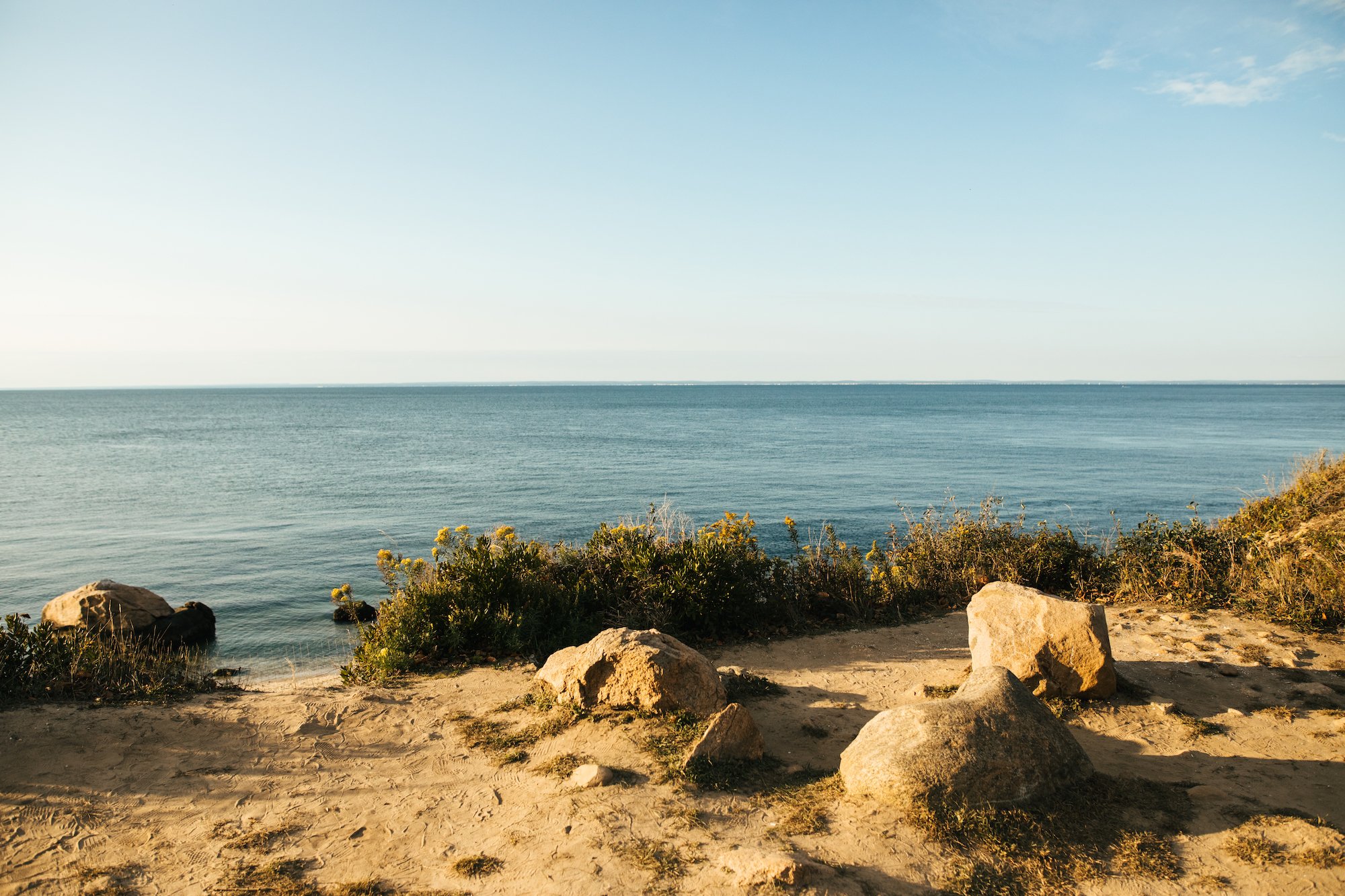Long Island The Vibrant New York Wine Region With 50 Years of History
Long Island, New York has historically been a prime place for agriculture—potatoes, corn, and strawberries are just a few of the foodstuffs coming from this strip of land just east of New York City— so it shouldn’t come as a surprise that a robust wine industry has developed. Celebrating a milestone 50th anniversary this year, that was marked by a Grand Celebration on August 19, Long Island has quietly emerged as one of the country’s most dynamic and innovative wine regions.
Windy Vines by Chris Fenimore
A Brief History of an Ancient Terroir
The umbrella Long Island American Viticultural Area (AVA) encompasses Nassau and Suffolk Counties, as well as Shelter and Robin Island. In total, approximately 57 wineries call Long Island home.
But Long Island splits into two distinct areas near the eastern tip: the North Fork and South Fork, and together they constitute the epicenter of Long Island winemaking. Although close geographically—both are part of Suffolk County—the two forks are divided into two separate viticultural areas.
The North Fork Long Island AVA, at 158 square miles, is home to the vast majority of producers. Wineries line the two major roads that form a loop on the peninsula and create a wine trail on par with Napa’s Highway 20 and Silverado Trail.
Hamptons Long Island AVA is 209 square miles but overall, the wine footprint is smaller. Just a handful of estates reside in this area, long considered the preeminent summer getaway for city-weary New Yorkers.
The surrounding bodies of water—Long Island Sound to the north, Block Island Sound to the east, and the Atlantic Ocean to the south— play a large role in the cool, maritime climate and high levels of humidity in the region.
Alex and Louisa Hargrave set the viticulture machine in motion by planting the region’s first vines in 1973. “From all accounts, they were met with a healthy dose of skepticism,” says Kareem Massoud, second-generation Owner of Paumanok and Palmer Vineyards, and President of the Long Island Wine Council. But a profile of the couple by The New York Times wine columnist Frank Prial in 1978 helped legitimize the Hargrave’s work and prompted Massoud’s parents to pursue their long-held interest in winemaking. By the time Prial published his next article about Long Island wine in 1983, the year the Massoud family founded Paumanok, there were 4 operating commercial wineries and another 5 or 6 waiting in the wings.
Massoud’s mother grew up in the Pfalz in Germany and was drawn to the cool climate of Long Island. “We have a delayed start to our growing season because the Atlantic acts as an air conditioner,” says Massoud. “Counterintuitively, this is a good thing because it reduces the risk of a spring frost. And then of course the opposite is true at the end of the season. These bodies of water warm up over the summer and elongate the growing season.”
Massoud counts the soils as another key to the region’s viticultural success. The island formed after the last Ice Age. As the glaciers receded, they pulverized the boulders that are commonly found elsewhere in the state, resulting in well-draining sand and gravel soils.
Pioneers & Innovation
Lieb Cellars winery photo credit Lieb Cellars
The beauty of a new region is the lack of regulations opens doors to innovation. Mark Lieb purchased what was to become the first vineyard for Lieb Cellars in 1992. The site, planted by a potato farmer with what he thought was chardonnay, turned out to be pinot blanc. Frustrated, the farmer sold to Lieb, who turned those few acres (and then some) into one of the more recognizable wineries on the North Fork. Lieb went on to co-found Premium Wine Group, a customer crush facility that to this day serves 16 clients. A second line, Bridge Lane was developed in 2004.
When new investors purchased all of Lieb’s businesses, they decided to reposition
Bridge Lane as an alternative-packaging line. In 2017, the first canned Bridge Lane wines hit the market. This was a milestone for the Long Island wine industry: according to Ami Opisso, General Manager at Lieb Cellars, these were the first canned wines produced on the East Coast. “Canned wine is the trickiest format because of chemistry and the canning process,” she explains. In addition, mobile canning lines for wine didn’t exist in the region, which further challenged the winery. But the response was overwhelmingly positive, and cans now constitute a large part of the Bridge Lane portfolio, along with kegs, boxed wine, and traditional 750ml bottles.
Sparkling Pointe
Classics With a Twist
Innovation also means taking cues from classic regions. Sparkling Pointe in Southold on the North Fork is dedicated to traditional method sparkling wines made from Champagne’s Big Three: chardonnay, pinot noir, and pinot meunier. “The climate here is really conducive to making wines with lower alcohol and higher acidity, and that fits well with the base for which we make sparkling wines,” says Production Winemaker Andrew Rockwell.
While traditional blends prevail, Rockwell is enthusiastic about Rouge, a sparkling red made from merlot. The red grape existed in a vineyard the estate’s owners purchased several years ago and given the vitality of the variety, “it seemed a real shame to pull it up,” says Rockwell. “So we’ve just always been exploring ways to make use of that vineyard.”
Long Island vineyards by Conor Harrigan
France, specifically Provence, also serves as a reference point for Wölffer Estate’s line of rosé wines. “When I came in 1992 to Long Island, at the time, people didn’t want to touch Long Island wine with a stick,” says Winemaker Roman Roth. But swayed by the parties and the beach lifestyle of the Hamptons, Roth, and winery founder Christian Wölffer made a rosé during Roth’s very first vintage.
“I made a dry rosé, while everyone else made sweet rosés and white zinfandels,” says Roth. The wines caught on with friends and restaurateurs — they targeted the fine- dining French restaurants in Manhattan with chefs that understood their style. Time, combined with clever marketing and a cultural zeitgeist, eventually pushed Wölffer to the forefront of the rosé movement and brought new attention to not only the South Fork but Long Island wines in general.
RGNY 2023 Scielo Sparkling Riesling
An Underdog Comes Out On Top
Long Island’s potential is garnering attention from all corners of the world. In 2018, Mexican winery Bodega Rivera González purchased what had been the Martha Clara Vineyard and in 2019, RGNY was born. They were looking for what CEO Maria Rivero González calls an “underdog” region — “because underdog regions let you be more aggressive in the innovation portion [of the business],” she says. RGNY produces a white merlot and is experimenting with amphora in the winemaking process. At both the winery in Mexico and on the North Fork, RGNY turned 2 acres at each of the properties into small laboratories to study the effect of fungi on viticulture and soil health. Their RGNY 2021 Scielo Sparkling Riesling “on the lees” was a 2023 NYIWC Gold Medal winner
Despite the desire to push limits, Rivero González says they are adamant about not forcing varieties that aren’t suited to the region. “I’m not going to do big bold reds unless a year allows me to do it,” she says. “But I can do amazing whites, I can do outstanding sparklings, and I can play around with orange wines.” Light reds, too, may become RGNY’s calling card: she thinks cabernet franc and sauvignon blanc are the future of Long Island wine. “If you listen to the ground, it will tell you what you can and can’t do,” she says.
Looking Forward
Beachfront by Chris Fenimore
Given its proximity to beaches, it’s no surprise Long Island has long been a vacation destination. And for wine lovers in the know, the North Fork’s wine trail, with over 30 wineries in short driving distance, is an accessible day trip. But everyone agrees COVID helped accelerate the tourism and hospitality piece of the industry. Instead of just summering Out East, people moved full-time and the Long Island wine industry benefitted from the expanding population with an influx of visitors to their estates.
But despite growth, the industry will always remain boutique. Currently, only 3,000 acres are under vine in Suffolk County. Legislation around land conservation and land trust ensures a good amount of land can’t be developed for anything but agriculture. Farming remains the focus on the North Fork and the region won’t be overrun by the condos, shopping centers, and resorts that have encroached upon other wine regions.
Even if every available acre was planted as vineyards, it would max out at about 30,000 acres total, according to Massoud. By comparison, Napa Valley has 43,000 acres under vine, and Bordeaux harvests over 271,000 acres.
The playground might be small, but winemakers have big visions. Climate change is on everyone’s minds, and Massoud thinks a conversation about hybrids and indigenous American varieties will take place in the future. Electric tractors are already making the rounds at night and research into UV light as an antidote to powdery mildew is taking place.
“I think Long Island is a region that’s just magical in the most natural sense of the word,” says Rivero González. “I love how it’s a big community. I love that there are a lot of new initiatives, a lot of new wines, and brands that are doing things differently. Every week you find a new experience, and I love being a part of it.”






